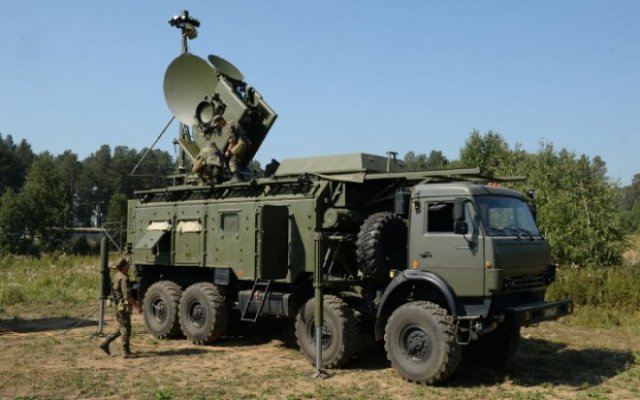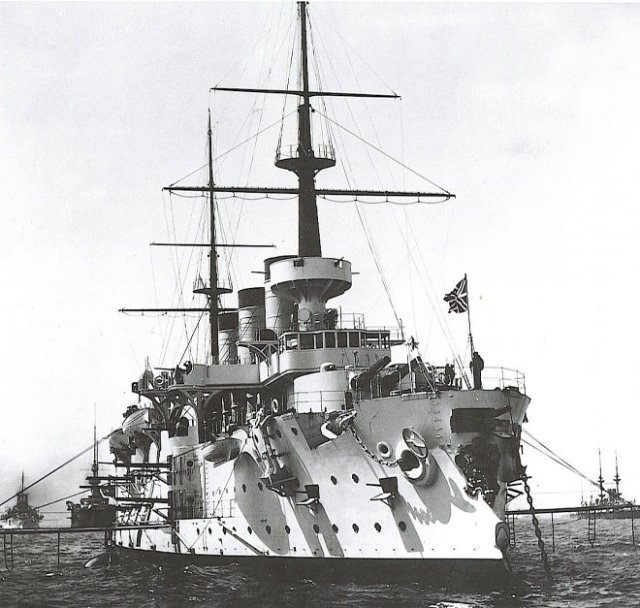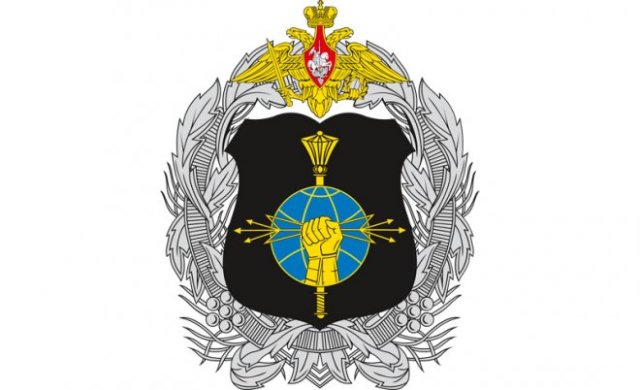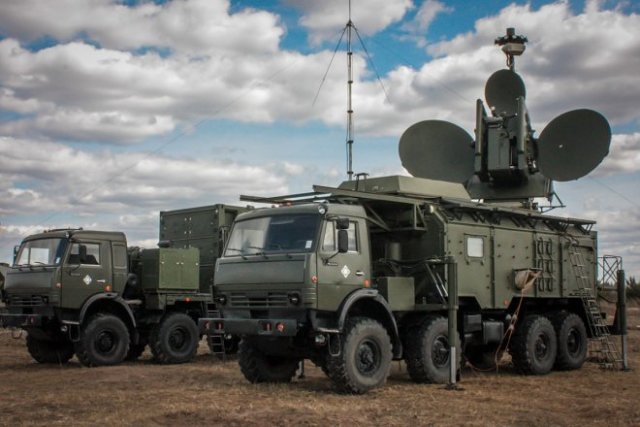
Rubella electronic warfare complex
Among the types of weapons of the Russian army undergoing rapid technological renewal, a special place is occupied by electronic warfare — electronic warfare. In recent years, the Russian military—industrial complex has presented a whole scattering of unique complexes - "Khibiny", "Borisoglebsk", "Murmansk", "Scorpion". Among them is the Krasukha ground-based electronic warfare system.
They are united by the ability to turn the electronic stuffing of modern enemy military equipment into a useless pile of metal in a matter of minutes without a single shot with the help of interference or special impulses.
A little history
Many consider EW to be a product of technologies of the last few decades. However, for the first time the idea of conducting radio reconnaissance was expressed by the inventor of radio A. S. Popov in March 1903. A year later, in March 1904, the commander of the Russian Pacific Fleet, Vice Admiral S. O. Makarov, in order No. 27 regulated the use of radio as a means of detecting and monitoring enemy radio traffic. Just a month later, the radio operators of the squadron battleship Pobeda and the naval radio station on the Golden Mountain stopped the radio exchange between the Japanese battleships Nissin and Kasuga, which fired from large-caliber guns at the forts of Port Arthur, and their spotters — two armored cruisers.

Squadron battleship "Victory"
Our radio operators, with the help of more powerful signals from their radio stations, completely suppressed the Japanese radio stations and disrupted the targeted shooting. In honor of this memorable event, on April 15, 1999, by order of the Ministry of Defense of Russia, a holiday was established — the Day of the Electronic Warfare Specialist.
Electronic warfare complexes "Krasukha-2" and "Krasukha-4"
Work on the creation of complexes "Krasukha-2" and "Krasukha-4" (1RL257 and 1L269) began in the mid-90s by the staff of the Rostov Research Institute "Gradient". The prototype was created at the Novgorod Kvant plant, and serial production was established at the Bryansk Electromechanical Plant. All of them are part of the "Concern Radioelectronic Technologies" — KRET. The complexes began to arrive in the Russian Army in 2014.

Emblem of the Russian Electronic Warfare troops
The Krasukha-2 analog electronic warfare system effectively combats AWACS aircraft, including AWACS at a range of up to 250 km, reliably protects KP, air defense units and military formations. The complex is equipped with the latest software that allows you to quickly adjust and manage signals. Krasukha-2 detects enemy objects and targets them with high-precision weapons. For example, the complex silences the onboard radars of radar-guided missiles, informing them of false targets, after which the missiles move away from the targets. Krasukha-4 suppresses ground-based surveillance radars and reconnaissance-strike complexes, missiles of various classes and multifunctional radars.

Krasukha-4 electronic warfare complex
The complex determines the parameters of detected signal sources of enemy equipment and suppresses them with its interference. Krasukha-4 covers stationary objects from airborne radars of reconnaissance aircraft and strike aircraft. For example, once in its area of operation, the AWACS system ceases to recognize "its" and "strangers" and loses controllability.
The composition of the Krasukha-4 electronic warfare complex
The complex is installed on the chassis of two KAMAZ-6350 (334) vehicles. It consists of:
- ultrahigh frequency microwave equipment U52219;
- wide-band antenna mast R-168 SHDAM;
- radio stations R-168-5 and R-168-100;
- manipulator of graphic information;
- device for recording and transferring information;
- protected computers Baguette-23B and Baguette-RSZBM;
- BRIZ-KM satellite navigation system;
- data transmission equipment;
- ADS-10 diesel units.
TTX "Krasukhi-4"
- The working sector in azimuth — 360° and in the angle of the place from — 1° to + 60-85°;
- The complex suppresses the radar of attack aircraft at a range of up to 20 km, reconnaissance strike complexes — up to 41 km, spacecraft — up to 25 km;
- Folding/deployment time in summer (winter) respectively 20 and 40 minutes, the readiness time is 3 minutes;
- Power consumption — 30 kW;
- The crew is 3-7 people.
Application of the Krasukha-4 electronic warfare system
Due to secrecy, there is very little information about the combat use of the complex. Nevertheless, it is known that Krasukha-4 is guarding the Russian Khmeimim base in Syria, where the complex successfully counteracts numerous attacks by UAVs of terrorists who tried to hit Russian Aerospace Forces aircraft in parking lots.
Krasukha-4 electronic warfare complex
And in October 2020, during the Armenian-Azerbaijani conflict, photos of downed Turkish Bayraktar drones without traces of fire damage were published in the Armenian media. According to experts, the Krasukha-4 electronic warfare system could "land" them. But since they are not in service with the Armenian Armed Forces, then, in all likelihood, the Turkish UAVs were destroyed from the territory of the Russian 102nd military base in Gyumri.
Krasukha-4 blocks the control channels of the drone and GPS with the help of active interference. As a result, the UAV, deprived of communication and orientation, "forgets" the way to the home airfield and after fuel generation falls to the ground.
